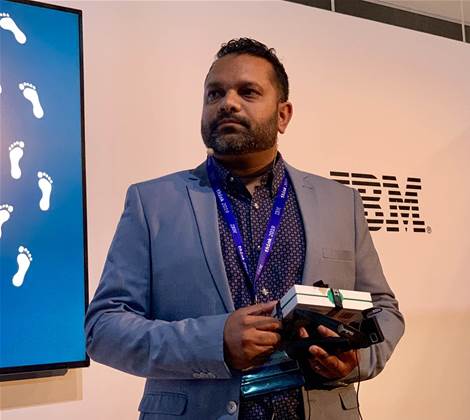Barrow Island, off Western Australia's Pilbara coast, is renown for its status as pristine environment which 24 species found nowhere else in the world call home.

As an A-class reserve, the far flung sanctuary is protected against aggressive, invasive species that could displace its existing fauna that has existed in splendid isolation for thousands of years.
This has allowed some animals to develop unique traits such the hare wallaby's double set of kidneys that help it retain moisture better, says Andre deSouza, business manager at Murdoch University's Harry Butler Institute.
In the wild
The institute, named after Australian naturalist Dr Harry Butler, is part of the environmental security management for the island, to protect against invasive species such as Asian House Geckos, rats, and feral cats that have the potential of wiping out the native population.
deSouza said the Asian House Gecko which is established on the mainland is a major concern.
"It is a survivor, hardy and aggressive, that displaces native species, breeds frequently and carries parasites," deSouza said.
Hemidactylus frenatus, as the geckos are also known, are also difficult to identify.
Protecting against invasive species requires identification of animals to establish what species they are, a slow process made more difficult by the lack of taxonomists, who are specialised biologists that categorise organisms.
Know your reptile
So the Harry Butler Institute has been using image recognition and artificial intelligence to help identifying geckos, on a triage basis.
AI and image recognition adds a level of confidence to an existing identification, deSouza told an audience at IBM's Think 2019 conference in Sydney, although environmental protection staff still have to send samples off the island for full identification.
The gecko hunting AI was trained with images taken in museums, and the results have so far been good.
It managed to recognise all samples with 100 percent accuracy as Asian house geckos, deSouza said. On average, the model has 98 percent certainty, he added.
He told iTnews that the cost of the project amounted to the outlay for a single server, and the approximately 400 man hours that deSouza spent on collecting and labelling the data.
Next up, the IBM supported project is looking at taking field photos of the geckos to supplement the imagery taken at museums. This is complicated by the fact that there are no H. frenatus on the island itself and a trip to Asia for field images may be required.
Rats? Off with their heads
While deSouza believes the sky is the limit for AI and image recognition use for conservation purposes other than gecko spotting, he recognises that the technology has limitations.
When it comes to identifying rats, "the project was doomed from the beginning" according to experts at the WA Museum consulted by the Harry Butler Institute.
Geckos have external patterns that distinguish them from each other. Rats on the other hand are identified by removing their heads which is the easiest way to identify them.
Image recognition for rats would have a very low success rate, deSouza said.
Down in the weeds
Nevertheless, there are more conservation applications that lend themselves for AI and image recognition such as improving robotic spraying of weeds, deSouza said.
Currently, robotic weed sprayers look for green in against a brown backdrop, a very simple form of image recognition.
Using AI allows for more complicated weed spraying scenarios and can make it more accurate, deSouza said.
He hopes to spread the message about AI in conservation to give it better traction, with increased numbers of federal grants for further projects.
Juha Saarinen attended Think 2019 as a guest of IBM.


_(22).jpg&h=140&w=231&c=1&s=0)
_(20).jpg&h=140&w=231&c=1&s=0)
.png&h=140&w=231&c=1&s=0)




_(26).jpg&w=100&c=1&s=0)

 iTnews Executive Retreat - Security Leaders Edition
iTnews Executive Retreat - Security Leaders Edition












_(1).jpg&h=140&w=231&c=1&s=0)



